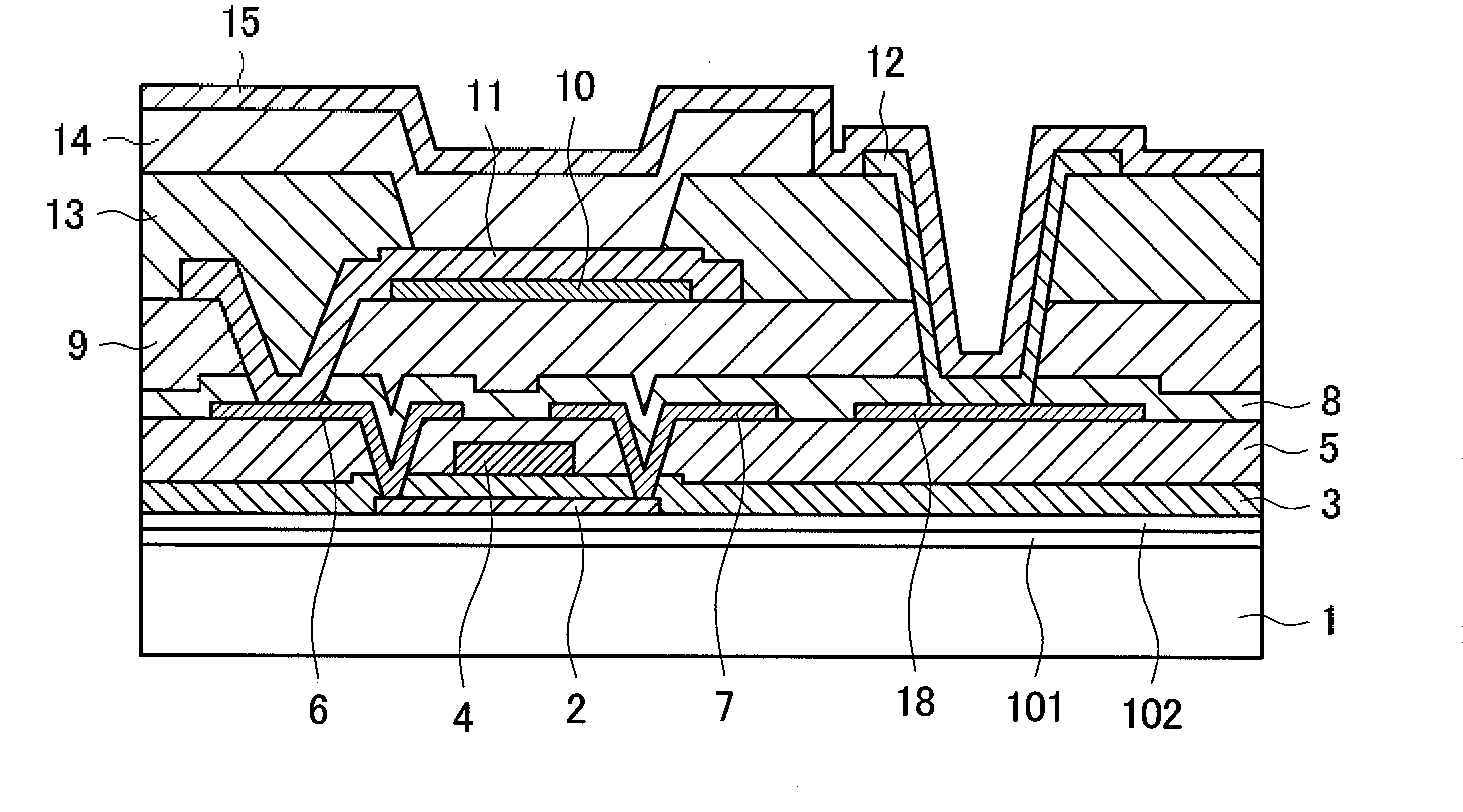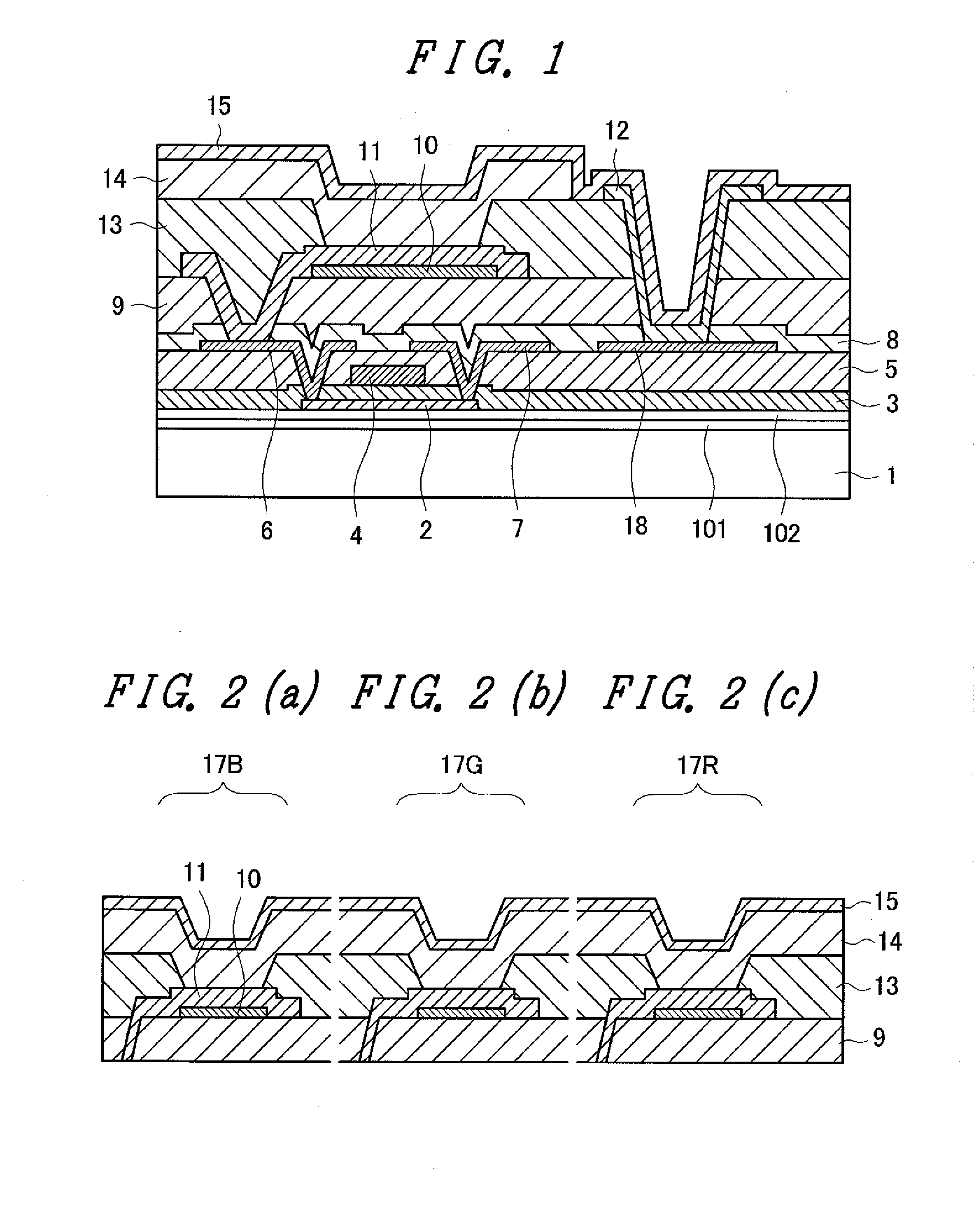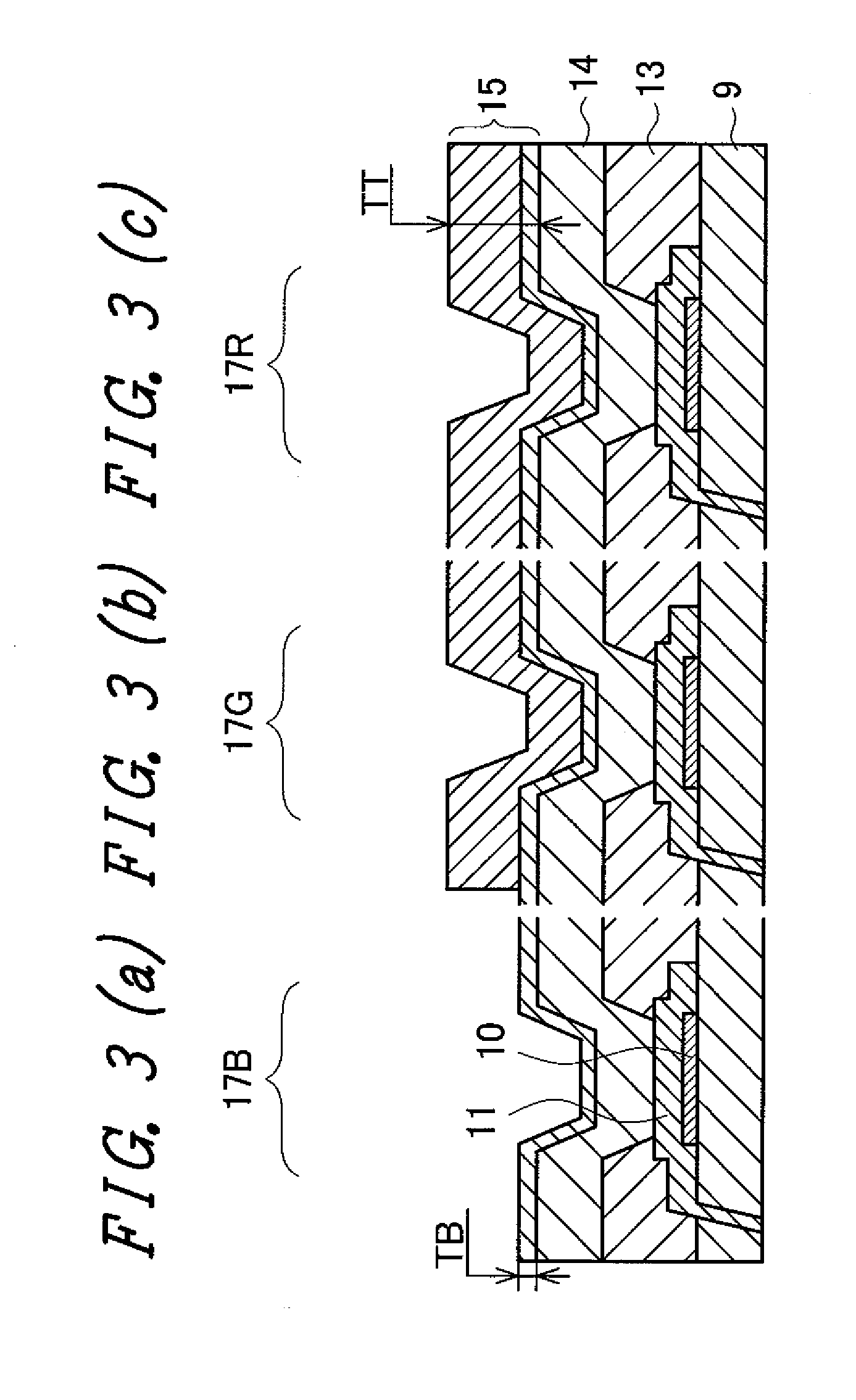Organic EL Display Device
a display device and organic technology, applied in the direction of discharge tube luminescnet screens, discharge tube/lamp details, electric discharge lamps, etc., can solve the problems of reducing the resistance in the upper electrode, affecting and affecting the effect of the brightness of the screen
- Summary
- Abstract
- Description
- Claims
- Application Information
AI Technical Summary
Benefits of technology
Problems solved by technology
Method used
Image
Examples
embodiment 1
[0062]FIG. 3A, FIG. 3B, and FIG. 3C are cross sectional schematic views showing the first embodiment of the invention. FIG. 3A is a cross sectional view of a blue pixel 17B, FIG. 3B is a cross sectional view of a green pixel 17G, and FIG. 3C is a cross sectional view of a red pixel 17R. This embodiment is characterized in that the respective upper electrodes 15 for the red pixel 17R and the green pixel 17G are thicker than the upper electrode 15 for the blue pixel 17B.
[0063]Light absorption of InZnO used as the upper electrode 15 is greater according as the wavelength of light is shorter. FIG. 4 shows a light transmittance of InZnO in every wavelength; the horizontal axis indicates a light wavelength λ (nm), while the vertical axis indicates a light transmittance I / Io. The transmittance in the case where a film thickness is a specified value B, is shown by a black circle and the transmittance in the case where a film thickness becomes ten times as large as the specified value B, is ...
embodiment 2
[0075]The first embodiment reduces the shading by enlarging the respective film thicknesses of the respective upper electrodes 15 for the red pixel 17R and the green pixel 17G without enlarging the film thickness of the upper electrodes 15 for the blue pixel 17B. In the first embodiment, the film thickness for the red pixel 17R is equal to the film thickness for the green pixel 17G. The first embodiment has an advantage that only one additional sputtering can reduce the shading without actual deterioration in brightness because the film thickness for the red pixel 17R is equal to that for the green pixel 17G.
[0076]On the other hand, as illustrated in FIG. 4, the transmittance of the upper electrode 15 is greater in the short wavelength region. Therefore, from the view point of properties, it is the most rational to make the upper electrode 15 for the red pixel 17R thicker than the upper electrode 15 for the green pixel 17G. Also in this case, since the upper electrode 15 is not thic...
embodiment 3
[0080]This embodiment relates to the case where the film thickness of the upper electrode 15 is enlarged either in the red pixel 17R or the green pixel 17G. When the film thickness of the upper electrode 15 changes, the light interference effect varies. The most suitable film thickness for taking out light depends on light wavelength. Therefore, when the film thicknesses of the upper electrodes 15 are enlarged in all the pixels including the red pixel 17R, the green pixel 17G, and the blue pixel 17B, the interference effect varies depending on the color.
[0081]As having been described in the first embodiment, when the film thickness of the upper electrode 15 for the blue pixel 17B is also enlarged, the brightness deteriorates. Further, like the second embodiment, when the film thicknesses for the red pixel 17R and the green pixel 17G are varied from each other, additional sputtering has to be performed two times. In this embodiment, additional sputtering is reduced to one time and th...
PUM
 Login to View More
Login to View More Abstract
Description
Claims
Application Information
 Login to View More
Login to View More - R&D
- Intellectual Property
- Life Sciences
- Materials
- Tech Scout
- Unparalleled Data Quality
- Higher Quality Content
- 60% Fewer Hallucinations
Browse by: Latest US Patents, China's latest patents, Technical Efficacy Thesaurus, Application Domain, Technology Topic, Popular Technical Reports.
© 2025 PatSnap. All rights reserved.Legal|Privacy policy|Modern Slavery Act Transparency Statement|Sitemap|About US| Contact US: help@patsnap.com



